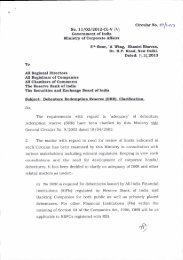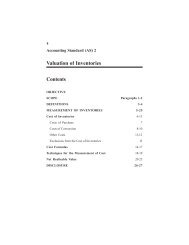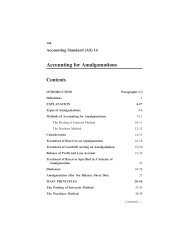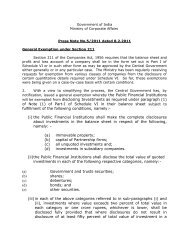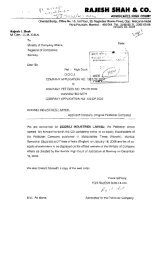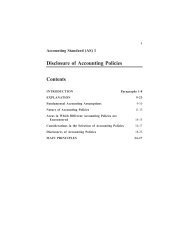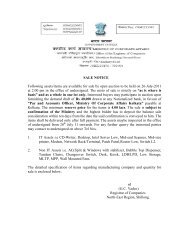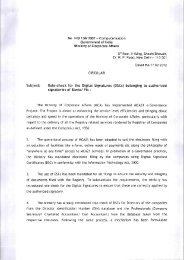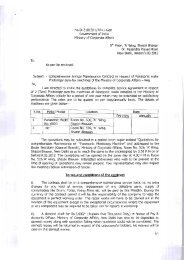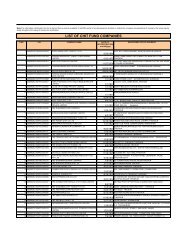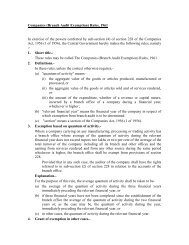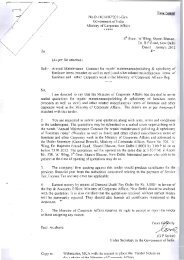Indian Accounting Standards(Ind AS) 1
Indian Accounting Standards(Ind AS) 1
Indian Accounting Standards(Ind AS) 1
You also want an ePaper? Increase the reach of your titles
YUMPU automatically turns print PDFs into web optimized ePapers that Google loves.
(ii) non-financial disclosures, eg the entity’s financial risk<br />
management objectives and policies (see <strong>Ind</strong> <strong>AS</strong> 107).<br />
115 In some circumstances, it may be necessary or desirable to vary the order of<br />
specific items within the notes. For example, an entity may combine<br />
information on changes in fair value recognised in profit or loss with<br />
information on maturities of financial instruments, although the former<br />
disclosures relate to the statement of profit and loss and the latter relate to the<br />
balance sheet. Nevertheless, an entity retains a systematic structure for the<br />
notes as far as practicable.<br />
116 An entity may present notes providing information about the basis of<br />
preparation of the financial statements and specific accounting policies as a<br />
separate section of the financial statements.<br />
Disclosure of accounting policies<br />
117 An entity shall disclose in the summary of significant accounting<br />
policies:<br />
(a) the measurement basis (or bases) used in preparing the financial<br />
statements, and<br />
(b) the other accounting policies used that are relevant to an<br />
understanding of the financial statements.<br />
118 It is important for an entity to inform users of the measurement basis or bases<br />
used in the financial statements (for example, historical cost, current cost, net<br />
realisable value, fair value or recoverable amount) because the basis on which<br />
an entity prepares the financial statements significantly affects users’ analysis.<br />
When an entity uses more than one measurement basis in the financial<br />
statements, for example when particular classes of assets are revalued, it is<br />
sufficient to provide an indication of the categories of assets and liabilities to<br />
which each measurement basis is applied.<br />
119 In deciding whether a particular accounting policy should be disclosed,<br />
management considers whether disclosure would assist users in<br />
understanding how transactions, other events and conditions are reflected in<br />
reported financial performance and financial position. Disclosure of particular<br />
accounting policies is especially useful to users when those policies are<br />
selected from alternatives allowed in <strong>Ind</strong> <strong>AS</strong>s. An example is disclosure of<br />
whether a venturer recognises its interest in a jointly controlled entity using<br />
proportionate consolidation or the equity method (see <strong>Ind</strong> <strong>AS</strong> 31 Interests in<br />
Joint Ventures). Some <strong>Ind</strong> <strong>AS</strong>s specifically require disclosure of particular<br />
accounting policies, including choices made by management between different<br />
policies they allow. For example, <strong>Ind</strong> <strong>AS</strong> 16 requires disclosure of the<br />
measurement bases used for classes of property, plant and equipment.<br />
120 Each entity considers the nature of its operations and the policies that the<br />
users of its financial statements would expect to be disclosed for that type of<br />
entity. For example, users would expect an entity subject to income taxes to<br />
disclose its accounting policies for income taxes, including those applicable to<br />
deferred tax liabilities and assets. When an entity has significant foreign<br />
operations or transactions in foreign currencies, users would expect disclosure<br />
25



